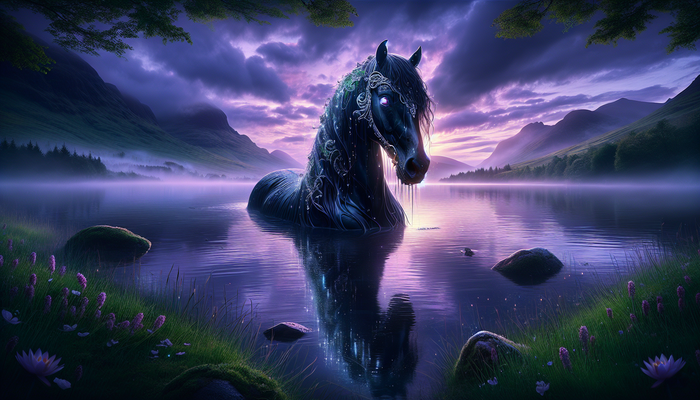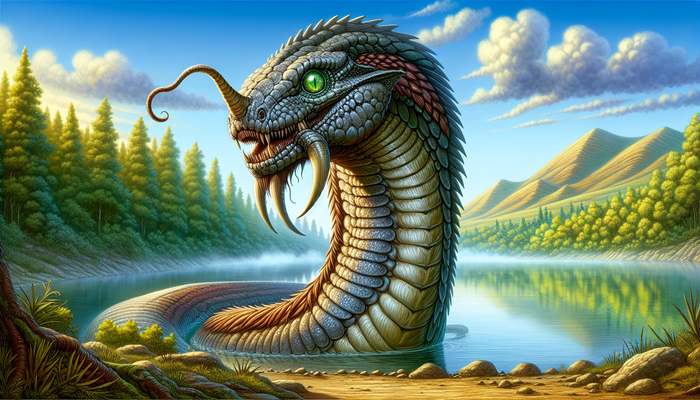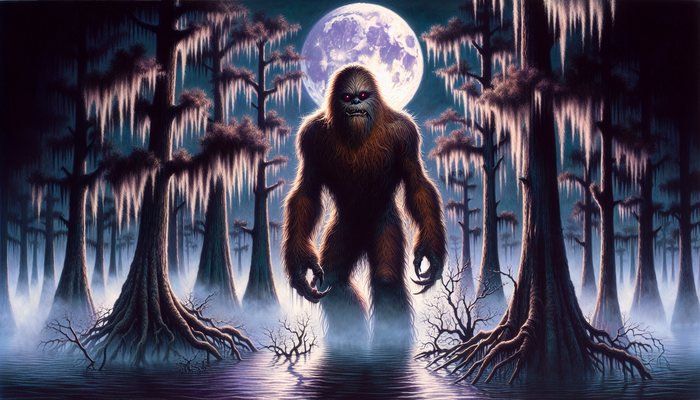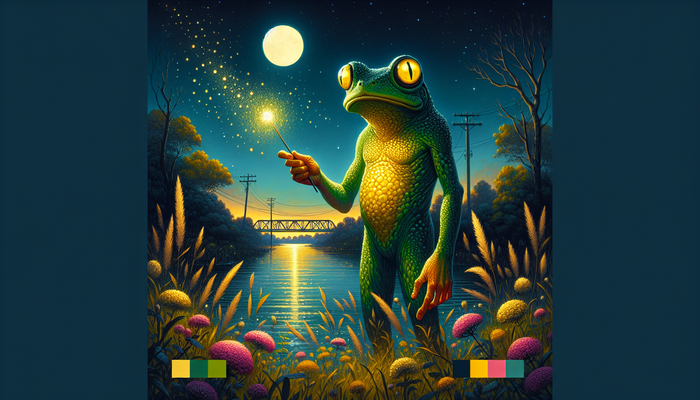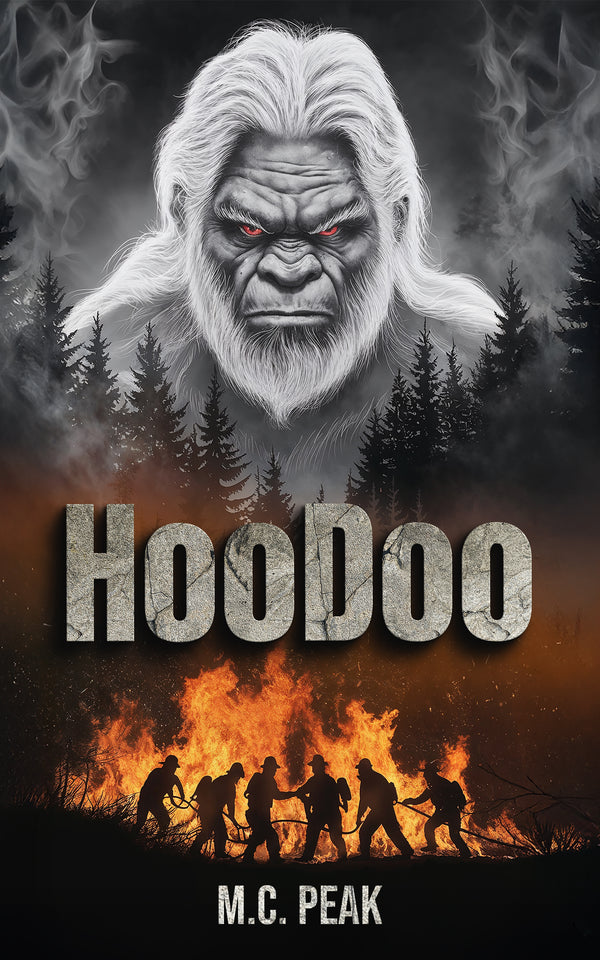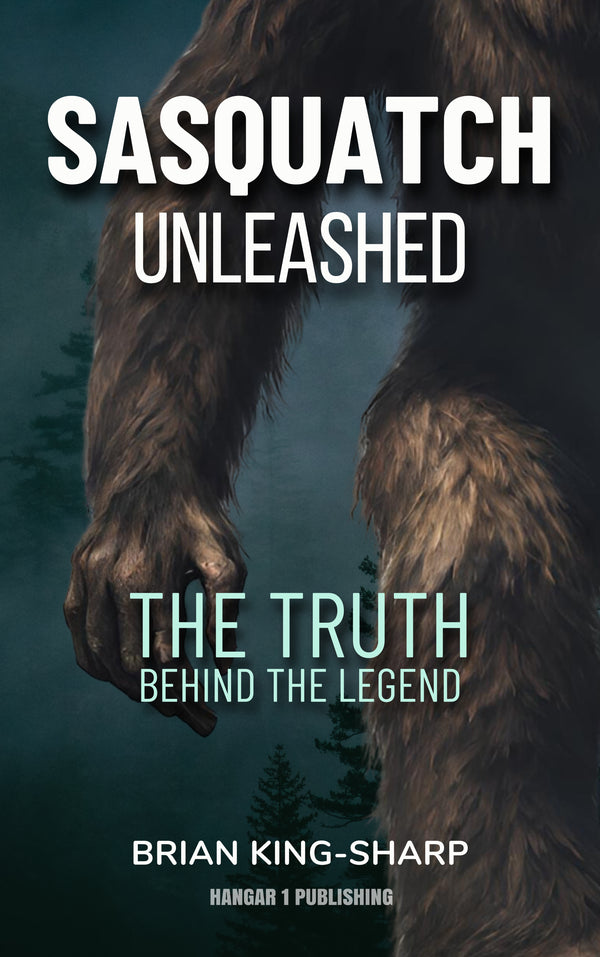Tengu: The Legendary Mountain Goblins of Japanese Folklore and Mythology
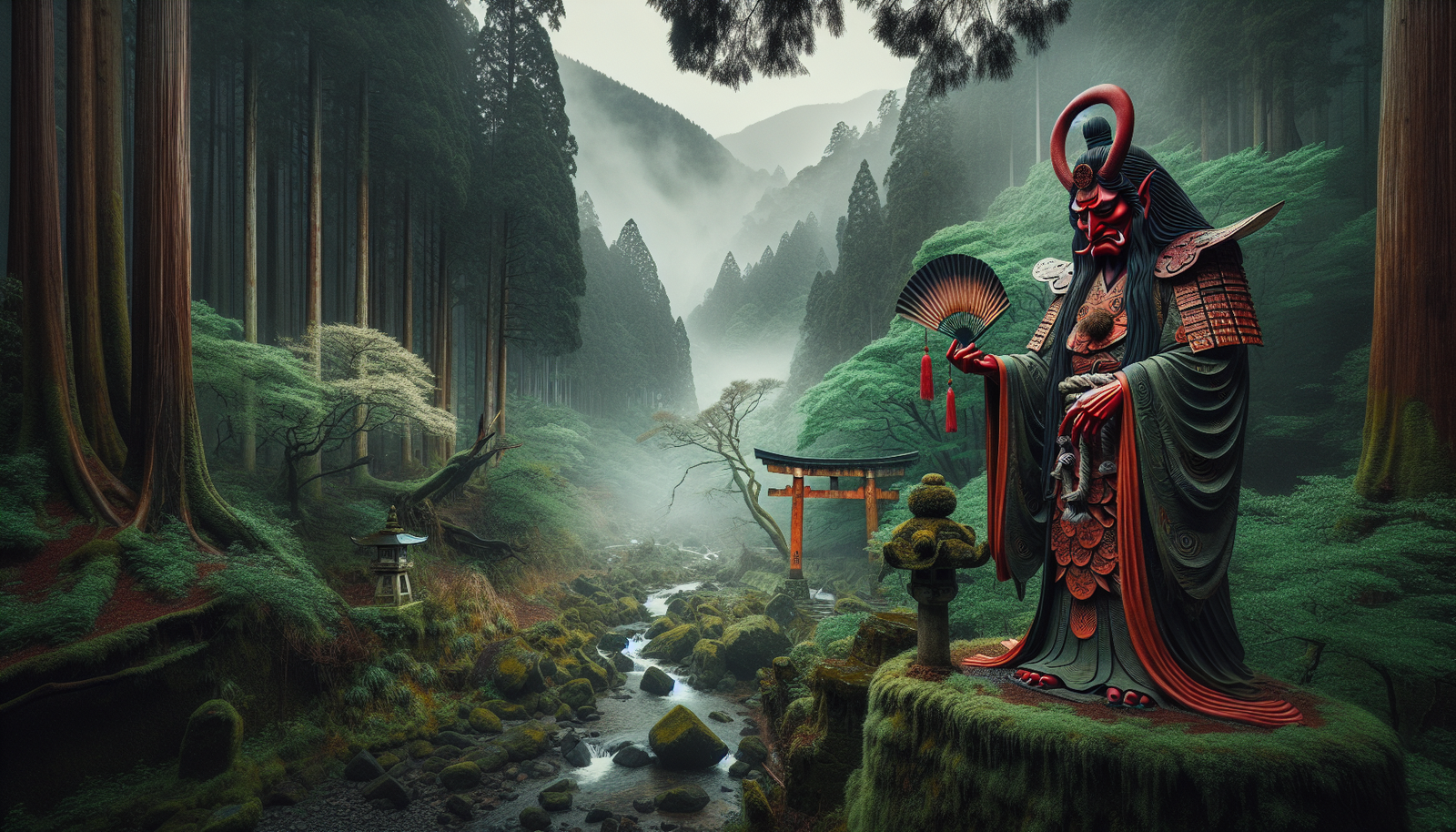
By Dr. Elizabeth Harper, Cryptozoologist
The subject of my latest research endeavor, the enigmatic tengu of Japanese folklore, has captivated my imagination in a way that few other mythological creatures have. These legendary mountain goblins, with their long noses and mischievous nature, have been a part of Japanese culture for centuries, evolving from feared demons to revered protectors of the natural world.
My fascination with the tengu began years ago when I first encountered a weathered woodblock print depicting a long-nosed creature perched atop a gnarled pine tree. Since then, I've dedicated countless hours to unraveling the mysteries surrounding these fascinating beings. As I delve deeper into their lore, I'm struck by the complexity of their nature and the profound impact they've had on Japanese culture.
The allure of the tengu lies not just in their striking appearance, but in the rich tapestry of stories and beliefs that have grown around them over the centuries. From their origins as celestial omens to their current status as guardians of the mountains, the tengu have undergone a remarkable transformation that mirrors the changing values and beliefs of Japanese society.
In this comprehensive exploration of tengu lore, I aim to take you on a journey through time and myth, examining the origins, characteristics, cultural significance, and modern interpretations of these captivating creatures. By the end of our journey, I hope you'll share my fascination with these legendary mountain goblins and gain a deeper appreciation for their place in Japanese folklore and mythology.
Origins and Etymology: Unraveling the Mystery of the "Heavenly Dog"
To truly understand the tengu, we must first examine their origins and the etymology of their name. The term "tengu" (天狗) literally translates to "heavenly dog" in English, a name that might seem puzzling given their current bird-like or humanoid appearance. This apparent contradiction is just the first of many intriguing aspects of tengu lore that we'll uncover.
The roots of the tengu can be traced back to ancient China, where a creature known as the tiangou (天狗) was believed to be a celestial dog associated with shooting stars and comets. These celestial phenomena were often seen as harbingers of war or disaster, setting the stage for the tengu's initial reputation as troublesome and potentially dangerous beings.
As I pored over ancient Japanese texts, I discovered that the earliest mentions of tengu in Japan date back to the 7th century. One of the most significant early references appears in the Nihon Shoki (Chronicles of Japan), compiled in 720 CE. In this text, there's an account of a strange celestial event:
"In the second month of the year 637, a great star floated from East to West, and there was a noise like that of thunder. The people of that day said that it was the sound of the falling star. Others said that it was earth-thunder. Hereupon the Buddhist Priest Bin said: 'It is not the falling star, but the Celestial Dog, the sound of whose barking is like thunder.'"
This passage is particularly fascinating because it demonstrates the early connection between tengu and celestial phenomena, as well as the influence of Buddhist thought on their interpretation. It's worth noting that at this point, the concept of tengu was still closely tied to their Chinese origins as celestial dogs.
However, as I delved deeper into Japanese folklore, I found that the tengu concept began to evolve rapidly, taking on distinctly Japanese characteristics. The transformation from celestial dog to mountain goblin is a testament to the adaptive nature of folklore and the influence of local beliefs and traditions.
One theory that caught my attention suggests that the tengu may have been influenced by the Hindu eagle deity Garuda, which was introduced to Japan through Buddhist scriptures. The Garuda, like the later depictions of tengu, is often portrayed with bird-like features and human characteristics. This potential connection highlights the complex web of cultural exchanges that shaped Japanese mythology.
As the tengu concept took root in Japan, it began to incorporate elements of indigenous Shinto beliefs, particularly those related to mountain spirits and deities. The mountains of Japan, with their towering forests and misty peaks, provided the perfect backdrop for the development of tengu lore. These wild, untamed places were seen as the domain of supernatural beings, and the tengu soon became their most prominent inhabitants.
The evolution of tengu from celestial omens to mountain spirits reflects a broader shift in Japanese religious thought. As Buddhism spread throughout Japan and began to intermingle with indigenous Shinto beliefs, the role of supernatural beings like the tengu became more complex. They were no longer simply harbingers of disaster but began to take on roles as both tricksters and potential allies to humans who showed proper respect for the natural world.
This transformation is particularly evident in the changing physical descriptions of tengu over time. Early accounts often described them as dog-like or bird-like creatures, in keeping with their name and Chinese origins. However, as we'll explore in the next section, the image of the tengu gradually became more humanoid, eventually settling on the distinctive long-nosed form that is most familiar today.
The etymology of "tengu" and its evolution from a celestial dog to a mountain goblin is a prime example of how folklore adapts and changes over time. It's a reminder that myths and legends are not static entities but living, breathing aspects of culture that reflect the values, fears, and aspirations of the societies that create them.
As we continue our exploration of tengu lore, keep in mind this remarkable journey from the heavens to the mountains. The tengu's ability to transcend their original concept and become deeply ingrained in Japanese culture is a testament to their enduring appeal and the rich imagination of the Japanese people.
Physical Characteristics: The Many Faces of Tengu
As we delve deeper into the world of tengu, one of the most fascinating aspects to explore is their physical appearance. The image of the tengu has undergone significant changes over the centuries, reflecting shifts in cultural beliefs and artistic representations. Today, tengu are generally depicted in two main forms: the Karasu Tengu (烏天狗) and the Daitengu (大天狗). Each of these forms has its own distinct characteristics and symbolic significance.
Karasu Tengu: The Crow Tengu
Let's start with the Karasu Tengu, which translates to "crow tengu." These creatures are often portrayed as having the body of a human but with distinctly bird-like features. They typically have a bird's head, complete with a sharp beak, and are adorned with feathers or wings. The Karasu Tengu are generally smaller than their Daitengu counterparts and are often depicted as servants or messengers to the more powerful tengu.
In my research, I've come across numerous artistic depictions of Karasu Tengu, particularly in medieval Japanese scrolls and woodblock prints. One striking example is found in the Tengu Zōshi Emaki, a set of illustrated handscrolls from the late 13th century. These scrolls show Karasu Tengu with human bodies but with the heads and beaks of crows, their black feathers a stark contrast to their human-like limbs.
The Karasu Tengu are often associated with mischief and trickery. In many folktales, they're portrayed as troublemakers who delight in causing chaos and confusion among humans. This mischievous nature is reflected in their often animated and energetic depictions in art, where they're shown darting through the air or perched on tree branches, always seeming to be in motion.
Daitengu: The Great Tengu
On the other hand, we have the Daitengu, or "great tengu." These are the tengu that have become most iconic in modern representations. The Daitengu are typically depicted as more human-like in appearance, with one striking feature that sets them apart: an extraordinarily long nose. This elongated nose has become so synonymous with tengu that it's often used as a shorthand to represent them in art and popular culture.
The Daitengu are usually portrayed as tall, imposing figures with red faces and long, white hair. They're often dressed in the garb of yamabushi, the mountain ascetics of the Shugendō religion. This attire typically includes a distinctive small black cap called a tokin, and a pompom sash known as a yuigesa. In their hands, Daitengu are frequently shown holding a feather fan called a hauchiwa, which is said to have the power to stir up great winds.
One of the most famous Daitengu in Japanese folklore is Sōjōbō, the king of the tengu who is said to reside on Mount Kurama near Kyoto. Sōjōbō is often depicted as an elderly figure with a long white beard, embodying the wisdom and power associated with the greatest of the tengu.
The Symbolism of the Long Nose
The long nose of the Daitengu is perhaps their most intriguing feature, and it's worth exploring its symbolism in more depth. In Japanese culture, the phrase "tengu ni naru" (天狗になる), which literally means "to become a tengu," is used to describe someone who has become arrogant or conceited. This association between tengu and pride is deeply ingrained in Japanese thought, and the long nose serves as a visual representation of this concept.
Some scholars have suggested that the long nose of the tengu may have been influenced by the appearance of foreigners who began to arrive in Japan in increasing numbers during the medieval period. The exaggerated facial features of these newcomers may have been incorporated into tengu imagery, blending with existing folklore to create the distinctive appearance we recognize today.
Regional Variations
It's also worth noting that there are regional variations in tengu appearance. For example, in some areas of Japan, tengu are associated with other animals besides crows. In the Akita region, there are legends of dog tengu, while in other areas, monkey tengu are part of local folklore. These variations highlight the adaptability of tengu lore and its ability to incorporate local beliefs and traditions.
Evolution of Tengu Appearance
The evolution of tengu appearance from bird-like creatures to the more humanoid Daitengu reflects broader changes in Japanese society and religious thought. As tengu began to be seen less as malevolent demons and more as powerful, if capricious, spirits, their appearance became more relatable and human-like. This transformation mirrors the changing relationship between humans and the natural world in Japanese culture, with the tengu serving as intermediaries between the mundane and the supernatural realms.
Tengu Accessories and Objects
In addition to their physical appearance, tengu are often associated with certain objects or accessories. The feather fan, as mentioned earlier, is one such item. Another is the ha-uchiwa, a fan made from hawk or other bird feathers, which is said to have the power to stir up great winds. Tengu are also sometimes depicted wearing tall, one-toothed geta sandals called tengu-geta, which leave distinctive footprints in their wake.
Modern Interpretations
As we consider the physical characteristics of tengu, it's important to remember that these descriptions are not fixed or immutable. Like all aspects of folklore, the appearance of tengu continues to evolve and adapt to changing cultural contexts. In modern manga and anime, for example, tengu might be depicted in ways that diverge from traditional representations while still maintaining recognizable elements of their legendary appearance.
The diverse physical forms of tengu, from the bird-like Karasu Tengu to the imposing Daitengu, reflect the rich and complex nature of these legendary beings. Their appearance serves not only to distinguish them from other mythical creatures but also to convey deeper meanings about their nature and role in Japanese folklore. As we continue our exploration of tengu lore, keep in mind how these physical characteristics interact with and inform other aspects of tengu mythology and cultural significance.
Cultural Significance: Tengu as Protectors and Tricksters
As we delve deeper into the world of tengu, it becomes clear that these fascinating creatures occupy a unique and complex position in Japanese culture. Far from being simple monsters or demons, tengu have come to embody a range of roles and meanings that reflect the evolving beliefs and values of Japanese society over the centuries.
Guardians of Mountains and Forests
One of the most significant aspects of tengu lore is their association with mountains and forests. In Japanese culture, mountains have long been viewed as sacred places, realms where the mundane world intersects with the divine. It's in this context that tengu have come to be seen as guardians and protectors of these wild spaces.
This protective role is closely tied to the tengu's connection with Shugendō, a syncretic religion that combines elements of esoteric Buddhism, Shinto, and Taoism. Shugendō practitioners, known as yamabushi, are mountain ascetics who seek spiritual power through rigorous training in the mountains. The tengu, with their supernatural abilities and deep connection to the natural world, are often seen as the spiritual embodiments of these ascetics.
In my research, I've come across numerous accounts of tengu acting as guardians of sacred mountains. For example, on Mount Kurama near Kyoto, the tengu king Sōjōbō is said to watch over the mountain and its inhabitants. Pilgrims and travelers who show proper respect for the mountain and its spirits are said to receive the tengu's protection, while those who desecrate the sacred space may face their wrath.
This protective aspect of tengu nature is reflected in many local festivals and customs throughout Japan. In some regions, tengu masks are worn during festivals as a way of invoking the creatures' protective powers. These masks, with their distinctive long noses and fierce expressions, serve as a reminder of the tengu's role as guardians of the natural world.
Tricksters and Mischief-Makers
However, it would be a mistake to view tengu solely as benevolent protectors. One of the most intriguing aspects of tengu lore is the duality of their nature. While they can be protective and even beneficial to humans under certain circumstances, they are also known for their mischievous and sometimes malevolent behavior.
In many folktales, tengu are portrayed as tricksters who delight in confounding and misleading humans. They're known for their ability to shapeshift, often taking on human form to interact with unsuspecting mortals. These encounters frequently serve as cautionary tales, warning against the dangers of pride, greed, or disrespect for the natural world.
One famous example of this trickster aspect can be found in the story of the "Tengu's Fan." In this tale, a greedy man obtains a magical fan from a tengu that can make noses grow or shrink. He uses this power to extort money from people, but ultimately falls victim to his own greed when his nose grows so long that it reaches the heavens, causing him great misfortune.
This duality in tengu nature – protective guardian on one hand, mischievous trickster on the other – reflects a broader theme in Japanese folklore and religion. It speaks to the complex and often ambiguous relationship between humans and the supernatural world, where beings like tengu can be both helpful and harmful depending on how they are approached and treated.
Martial Arts and Warrior Culture
The cultural significance of tengu extends beyond their roles as protectors and tricksters. They have also come to be associated with martial arts and warrior culture in Japan. This connection is most famously exemplified in the legend of Minamoto no Yoshitsune, one of Japan's most renowned warriors.
According to the tale, young Yoshitsune (then known as Ushiwaka-maru) was trained in the art of swordsmanship by the tengu king Sōjōbō on Mount Kurama. This supernatural training is said to have given Yoshitsune his legendary fighting skills, which he used to great effect in the Genpei War. This story not only enhances the mystique of Yoshitsune but also cements the tengu's reputation as masters of martial arts.
This association with martial prowess has led to tengu being revered by many martial arts schools and practitioners. Some traditional sword fighting techniques are said to have been inspired by or even directly taught by tengu. This belief speaks to the enduring impact of tengu lore on Japanese culture, extending their influence beyond the realm of folklore and into practical disciplines.
Tengu in Literature and Art
In literature and art, tengu have been a popular subject for centuries. They feature prominently in many classical Japanese works, such as the Konjaku Monogatarishū, a collection of over a thousand stories compiled in the late Heian period. In these tales, tengu often serve as antagonists to Buddhist monks, testing their faith and resolve.
The portrayal of tengu in literature evolved over time, mirroring changes in Japanese society. In earlier works, they were often depicted as dangerous demons to be feared and avoided. However, as Japanese religious thought became more syncretic, incorporating elements of Buddhism, Shinto, and folk beliefs, the portrayal of tengu became more nuanced. They began to be seen as powerful spirits who, while potentially dangerous, could also be bargained with or even befriended under the right circumstances.
In the visual arts, tengu have been a popular subject for centuries. From medieval emaki scrolls to Edo-period ukiyo-e prints, artists have delighted in depicting these strange and fascinating creatures. The distinctive appearance of tengu, particularly the long-nosed Daitengu, makes them instantly recognizable and has contributed to their enduring popularity in Japanese visual culture.
One particularly interesting aspect of tengu imagery is the way it has been used to comment on social and political issues. During the Edo period, for example, some artists used tengu imagery as a way to satirize the powerful Buddhist institutions of the time. The long noses of the tengu were seen as symbolic of the pride and arrogance of corrupt monks, allowing artists to make pointed critiques while ostensibly depicting mythological creatures.
Tengu in Modern Culture
The cultural significance of tengu extends into modern times, where they continue to be a popular subject in literature, film, anime, and manga. In these contemporary works, tengu often retain their traditional characteristics but are reinterpreted for modern audiences. They might appear as powerful allies to the protagonists, ancient beings adapting to the modern world, or as symbols of Japan's mythological heritage.
For example, in the popular anime and manga series "Natsume's Book of Friends," tengu appear as powerful yokai (supernatural beings) who interact with the human protagonist. While retaining many of their traditional characteristics, these modern tengu are portrayed with depth and complexity, reflecting contemporary views on the relationship between humans and the supernatural world.
The enduring popularity of tengu in Japanese culture speaks to their versatility as symbols and characters. They embody the mysterious and untamed aspects of nature, serve as reminders of the importance of humility and respect, and represent a connection to Japan's rich mythological heritage. Whether seen as fearsome demons, wise guardians, or mischievous tricksters, tengu continue to captivate the imagination and reflect the values and beliefs of Japanese society.
As we continue our exploration of tengu lore, it's important to keep in mind this rich cultural context. The stories, beliefs, and artistic representations surrounding tengu are not mere curiosities or relics of the past, but living aspects of Japanese culture that continue to evolve and resonate with people today. In the next section, we'll delve deeper into some of the most famous legends and tales involving tengu, further illuminating their place in Japanese folklore and the lessons they impart.
Tengu in Folklore and Literature: Tales of Mischief, Wisdom, and Redemption
As we continue our journey through the world of tengu, we come to one of the most fascinating aspects of their lore: the rich tapestry of stories and legends that have grown up around these enigmatic creatures. These tales, passed down through generations, offer invaluable insights into the role of tengu in Japanese culture and the lessons they were meant to impart.
Sōjōbō and Minamoto no Yoshitsune
One of the most famous and influential tengu legends is the tale of Sōjōbō and Minamoto no Yoshitsune. This story not only showcases the tengu's reputation as masters of martial arts but also touches on themes of loyalty, honor, and the complex relationship between humans and supernatural beings.
According to the legend, Yoshitsune (then known as Ushiwaka-maru) was sent to the temple on Mount Kurama as a young boy after his father's defeat and death at the hands of the rival Taira clan. It was here that he encountered Sōjōbō, the king of the tengu.
Impressed by the young boy's determination and spirit, Sōjōbō decided to take Ushiwaka-maru under his wing. Over the course of several years, the tengu king taught the boy the art of swordsmanship, strategy, and even magical techniques that would allow him to leap great distances – skills that would later make Yoshitsune one of Japan's most legendary warriors.
This story is significant on multiple levels. First, it establishes the tengu as beings of great wisdom and martial prowess, capable of passing on supernatural abilities to worthy humans. Second, it serves as an origin story for one of Japan's most beloved historical figures, adding a layer of mystique to Yoshitsune's already impressive reputation.
But perhaps most importantly, the tale of Sōjōbō and Yoshitsune speaks to the potential for positive interactions between humans and tengu. Unlike many earlier stories where tengu were portrayed as purely malevolent beings, this legend shows them as potential mentors and allies to humans who demonstrate the right qualities.
The Tengu's Magic Cloak
Another famous tengu tale is "The Tengu's Magic Cloak," which showcases the creatures' reputation as tricksters – and the potential for clever humans to outwit them. In this story, a young boy encounters a tengu in the forest. The tengu, impressed by what he believes to be a magical piece of bamboo the boy is carrying, offers to trade it for his invisibility cloak.
The boy, realizing the tengu's greed and gullibility, agrees to the trade. He uses the cloak to play tricks on his fellow villagers, but eventually returns it to the tengu after learning the consequences of his actions. This tale serves as a cautionary story about the dangers of greed and the importance of using power responsibly.
The Old Man's Lump Removed
"The Old Man's Lump Removed" is another classic tengu tale that highlights the capricious nature of these beings. In this story, an old man with a large lump on his face encounters a group of tengu having a party in the forest. He joins in their dancing, much to their delight. As a reward, the tengu remove his lump, thinking he'll want it back and thus return to dance with them again.
The old man's neighbor, hearing of this good fortune, decides to try his luck with the tengu. However, his dancing displeases them, and they end up giving him the first old man's lump in addition to his own. This story teaches lessons about the unpredictable nature of dealing with supernatural beings, as well as the folly of trying to replicate another's good fortune through deception.
The Tengu's Fan
"The Tengu's Fan" is yet another tale that showcases the mischievous side of tengu. In this story, a man obtains a magical fan from a tengu that can make noses grow or shrink. He uses this power to extort money from people, but ultimately falls victim to his own greed when his nose grows so long that it reaches the heavens, causing him great misfortune.
These stories, while entertaining, also serve important cultural functions. They reinforce social values, warn against vices like greed and arrogance, and provide explanations for natural phenomena. The tengu, with their supernatural powers and capricious nature, serve as perfect vehicles for these moral lessons.
Evolution of Tengu in Literature
It's worth noting that the portrayal of tengu in these folktales evolved over time. In earlier stories, tengu were often depicted as purely malevolent beings, enemies of Buddhism who delighted in causing chaos and leading priests astray. The Konjaku Monogatarishū, a collection of tales from the late Heian period, contains several stories of tengu using their powers of illusion to trick and torment Buddhist monks.
However, as Japanese religious thought became more syncretic, incorporating elements of Buddhism, Shinto, and folk beliefs, the portrayal of tengu became more nuanced. They began to be seen as powerful spirits who, while potentially dangerous, could also be bargained with or even befriended under the right circumstances.
This evolution is reflected in later literary works, such as the Otogizōshi, a genre of short stories that became popular in the Muromachi period. In these tales, tengu often play more complex roles, sometimes even acting as allies to human protagonists.
Tengu no Dairi
One particularly interesting Otogizōshi featuring tengu is "Tengu no Dairi" (The Tengu's Palace). In this tale, a young Minamoto no Yoshitsune visits the palace of the tengu king in the sky. There, he witnesses a debate between the tengu and various Buddhist deities, showcasing the complex religious landscape of medieval Japan.
Taira no Masakado
The story of Taira no Masakado, a 10th-century samurai who led a rebellion against the imperial court, also features tengu in a significant role. According to legend, after Masakado's defeat and death, his vengeful spirit transformed into a powerful tengu. This tale reflects the belief that individuals who died with strong grudges or unfulfilled ambitions could become tengu in the afterlife.
Tengu in Epic Literature
In addition to these specific tales, tengu have played important roles in larger literary works. In the war epic "Heike Monogatari," for example, tengu are mentioned as harbingers of the conflict between the Taira and Minamoto clans. Their appearance in the sky over the capital is seen as an omen of the coming strife.
Tengu in Noh Theater
The influence of tengu lore extends beyond traditional folklore and literature into other forms of cultural expression. In the world of Noh theater, for example, there are several plays featuring tengu as central characters. One of the most famous is "Kurama Tengu," which dramatizes the story of Yoshitsune's training by Sōjōbō.
In this play, the tengu is portrayed not as a fearsome demon, but as a wise and powerful being who recognizes the potential in young Yoshitsune. The play explores themes of mentorship, the acquisition of knowledge, and the relationship between the human and supernatural worlds.
Another notable Noh play featuring tengu is "Zenji Shugyō" (The Religious Training of the Zen Master). In this play, a proud Zen master is humbled by an encounter with a tengu, learning the importance of true humility in spiritual practice. This play reflects the evolving role of tengu in Japanese thought, from enemies of Buddhism to potential teachers of spiritual truths.
The Enduring Legacy of Tengu in Literature
The enduring popularity of tengu in Japanese literature and folklore speaks to their versatility as characters and symbols. They can represent the mysterious and untamed aspects of nature, serve as reminders of the importance of humility and respect, or embody the potential for wisdom and power that exists beyond the human realm.
Moreover, the evolution of tengu portrayals over time reflects broader changes in Japanese society and thought. From fearsome demons to complex spiritual beings, the tengu have adapted to changing cultural contexts while retaining their essential mystique.
As we reflect on these tales and their significance, it's clear that the tengu occupy a unique place in Japanese culture. They are more than just mythical creatures; they are repositories of cultural wisdom, reflections of societal values, and bridges between the mundane and supernatural worlds.
Tengu in Art and Representation: From Ancient Scrolls to Modern Media
The visual representation of tengu in Japanese art provides a fascinating window into the evolution of these mythical creatures in the popular imagination. From ancient religious scrolls to contemporary anime and manga, tengu have been depicted in a wide variety of styles and contexts, each offering unique insights into their cultural significance.
Early Depictions: The Tengu Zōshi
One of the earliest and most significant visual representations of tengu can be found in the Tengu Zōshi, a set of illustrated handscrolls dating back to 1296. These scrolls, now housed in the Nezu Museum in Tokyo, depict tengu as bird-like creatures with human bodies and crow heads. What's particularly interesting about these scrolls is that they use tengu as a means of satirizing the Buddhist establishment of the time. The tengu are shown mimicking the behavior of corrupt monks, highlighting the perceived hypocrisy and worldliness of some religious institutions.
Edo Period: Tengu in Ukiyo-e
This use of tengu imagery as a form of social commentary is a recurring theme in Japanese art. During the Edo period (1603-1868), for example, ukiyo-e artists often incorporated tengu into their prints as a way of making veiled criticisms of the shogunate or other powerful entities. The long noses of the tengu were seen as symbolic of arrogance and pride, allowing artists to make pointed critiques while ostensibly depicting mythological creatures.
One of the most famous ukiyo-e artists to depict tengu was Utagawa Kuniyoshi (1798-1861). His print series "One Hundred Stories of Japan and China" includes several striking depictions of tengu. In one particularly notable image, Kuniyoshi shows the warrior Minamoto no Yoshitsune practicing martial arts under the tutelage of the tengu king Sōjōbō. This print not only illustrates the famous legend but also showcases the distinctive visual characteristics of tengu that had become standardized by this time: the long nose, the wings, and the yamabushi-style clothing.
Codifying Tengu Appearance: Toriyama Sekien
Another significant artist who contributed to the visual evolution of tengu was Toriyama Sekien (1712-1788). In his illustrated bestiary "The Illustrated Night Parade of a Hundred Demons," Sekien provided detailed depictions of various yokai, including several types of tengu. His illustrations helped to codify the appearance of different tengu varieties, from the crow-like Karasu Tengu to the long-nosed Daitengu.
Modern Interpretations: Tengu in the 20th Century and Beyond
As we move into the modern era, the representation of tengu in art continues to evolve. In the early 20th century, artists like Kawanabe Kyōsai (1831-1889) created striking images of tengu that blended traditional motifs with a more modern sensibility. Kyōsai's tengu are often depicted with a sense of humor and whimsy, reflecting changing attitudes towards these once-fearsome creatures.
In contemporary Japan, tengu continue to be a popular subject in various forms of visual media. In manga and anime, tengu often appear as powerful yokai or supernatural beings. Their depiction can range from fairly traditional, maintaining the long nose and wings, to more stylized interpretations that capture the essence of tengu lore while adapting it for modern audiences.
For example, in the popular manga and anime series "Natsume's Book of Friends," tengu appear as powerful and somewhat aloof yokai, maintaining many of their traditional characteristics while being integrated into a modern story. The series explores themes of coexistence between humans and supernatural beings, with tengu often representing the more powerful and unpredictable aspects of the yokai world.


